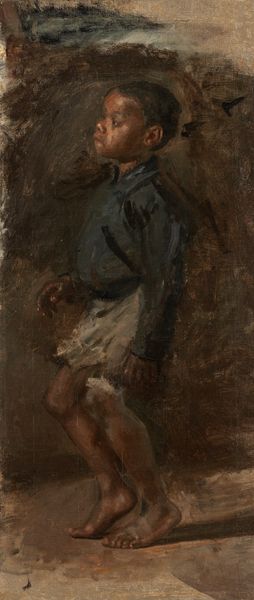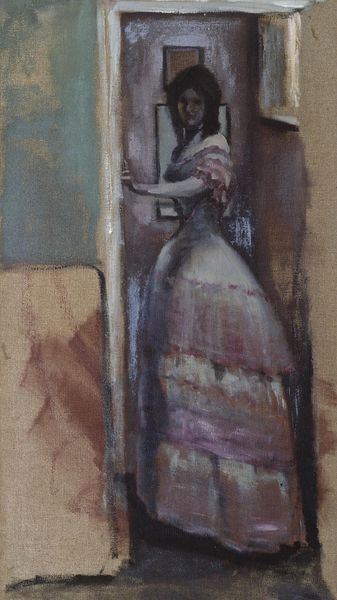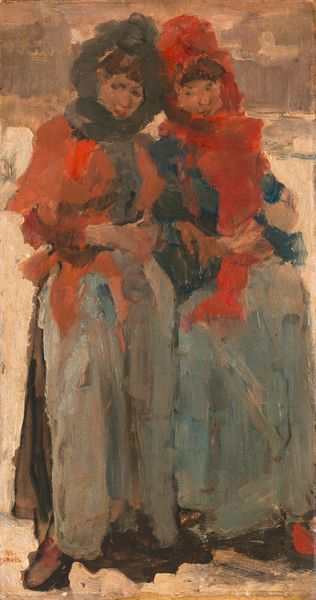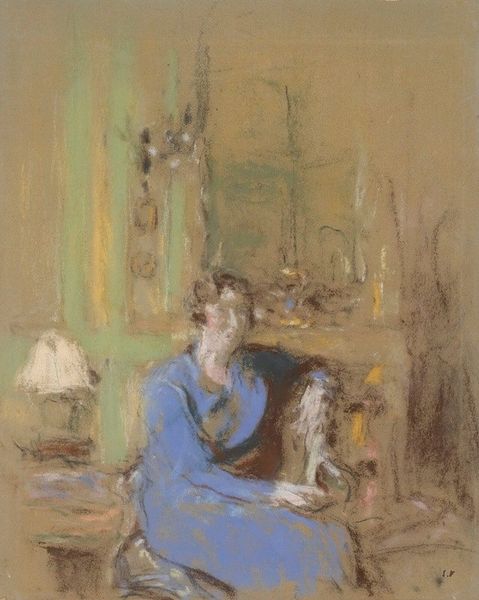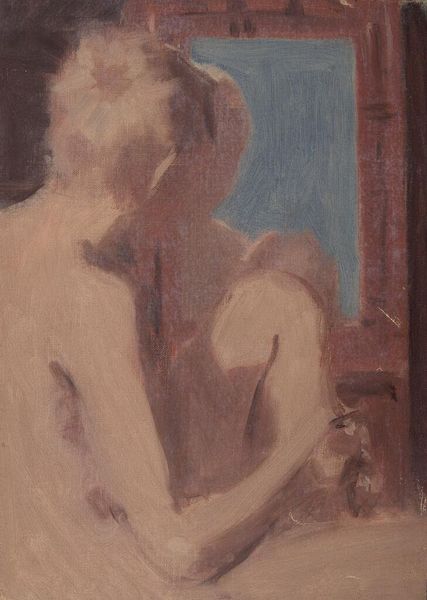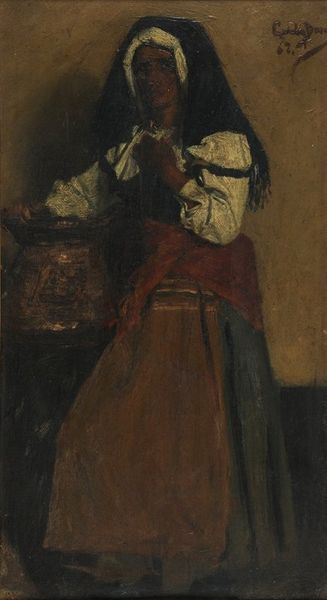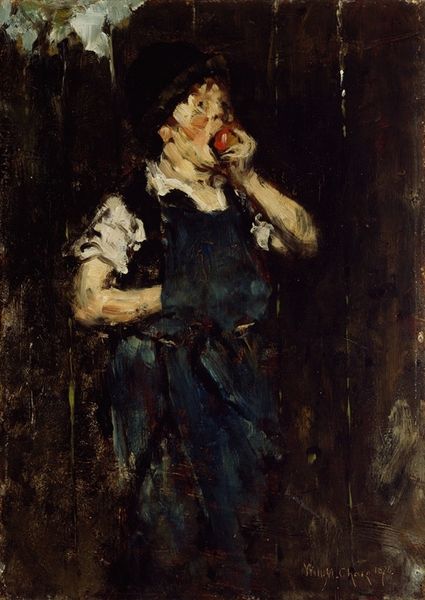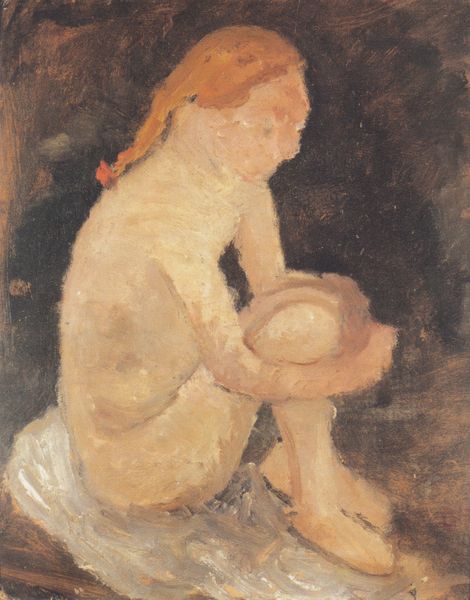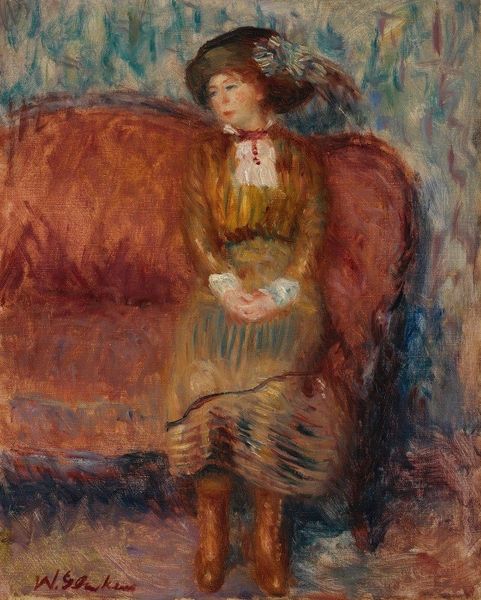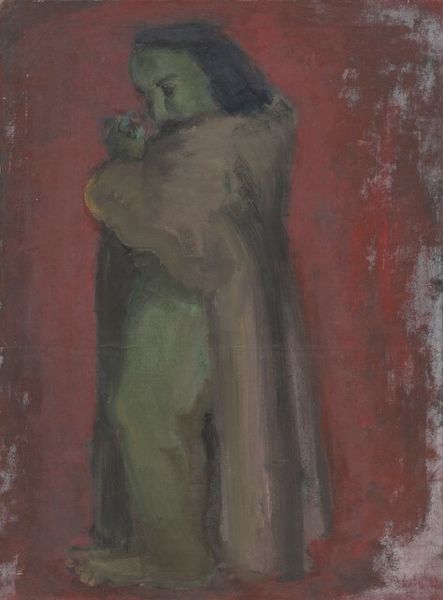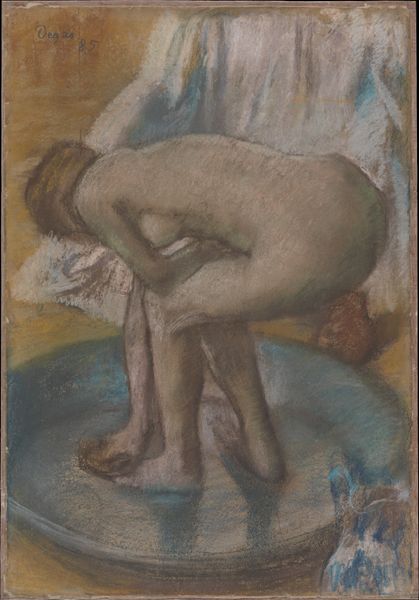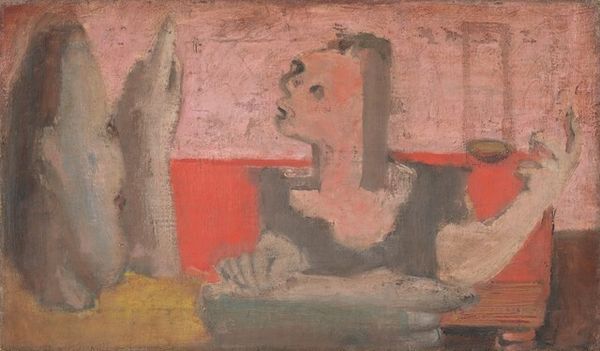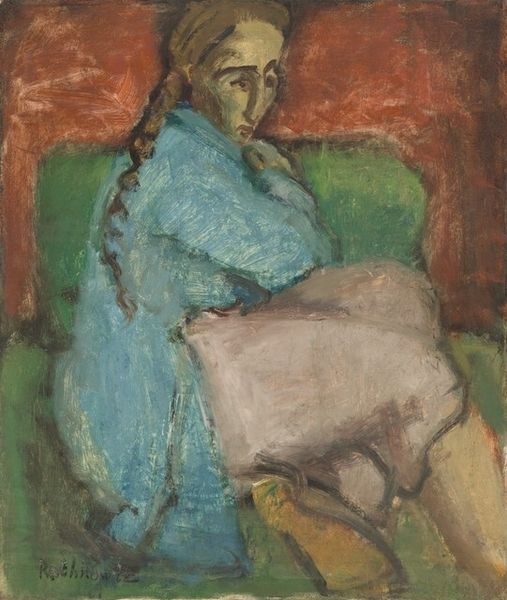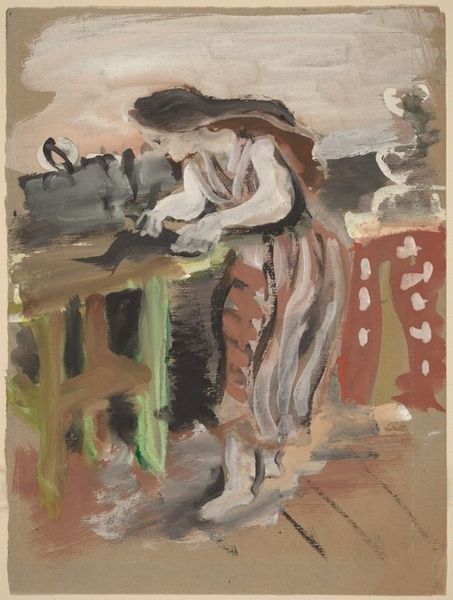
painting, oil-paint
#
portrait
#
painting
#
oil-paint
#
oil painting
#
ashcan-school
#
genre-painting
#
watercolor
#
realism
Dimensions: overall: 80.6 x 61 cm (31 3/4 x 24 in.) framed: 91.8 x 72.2 x 6.2 cm (36 1/8 x 28 7/16 x 2 7/16 in.)
Copyright: National Gallery of Art: CC0 1.0
Editor: We're looking at Mark Rothko's "Woman and Cat," painted in 1933 using oil on canvas. It's quite muted in color, and I’m immediately drawn to the woman’s pose – her hands framing her face. What stands out to you about this piece? Curator: Well, considering the Ashcan School influence, I'm interested in the very *stuff* of the painting. Look at the materiality: the loose brushstrokes, the visible canvas, and the way Rothko builds up layers of oil paint. It reflects a working-class realism, devoid of the polished finish that you might see in high society portraiture. Editor: So, you’re focusing on the *how* rather than the *who*? Curator: Exactly. This piece shows the means of production, doesn’t hide the labour. Consider what the availability and cost of oil paints would have meant at the time, especially for artists aligned with social realism. Was Rothko making a statement by using these readily available materials, rejecting finer, costlier alternatives? What do you make of that very visible underpainting? Editor: I hadn't considered the economic aspect. It definitely lends a rawness to the portrait. You see the process. Do you think the "Woman and Cat" holds some symbolism? Curator: Less symbolism, perhaps, and more a focus on the everyday. Genre painting in itself elevates the ordinary, but I look at how the artist made it – that tells the real story. Think of it as Rothko chronicling his present: cheap, available paints and a straightforward, working-class subject. How does understanding these things reshape your initial impressions? Editor: It makes me appreciate the unpretentious nature of it. Before, I focused on the woman’s expression, her internal state, but now I see the painting as a product of its time, made with the means available. It is also about labour in a sense! Curator: Precisely. We both found something interesting about it!
Comments
No comments
Be the first to comment and join the conversation on the ultimate creative platform.
